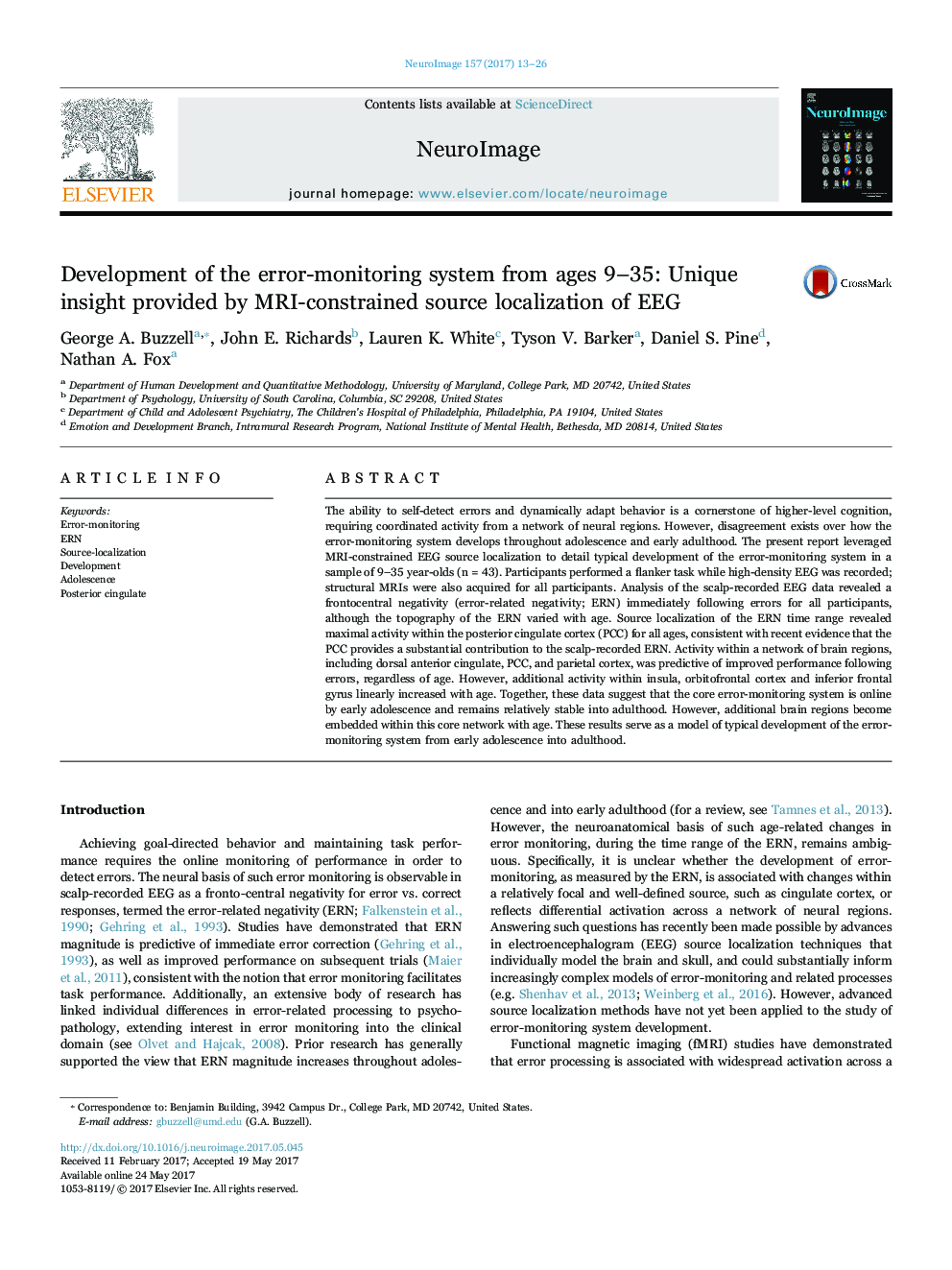| کد مقاله | کد نشریه | سال انتشار | مقاله انگلیسی | نسخه تمام متن |
|---|---|---|---|---|
| 5630895 | 1580853 | 2017 | 14 صفحه PDF | دانلود رایگان |

- ERN topography and source activity changed as a function of age (9-35 years).
- Two primary clusters of neural activity found to give rise to the ERN.
- Dorsal cluster stable across age, ventral-frontal cluster increased with age.
- Dorsal cluster (including posterior cingulate) predicted control after errors.
- Data serve as model of typical error-monitoring development.
The ability to self-detect errors and dynamically adapt behavior is a cornerstone of higher-level cognition, requiring coordinated activity from a network of neural regions. However, disagreement exists over how the error-monitoring system develops throughout adolescence and early adulthood. The present report leveraged MRI-constrained EEG source localization to detail typical development of the error-monitoring system in a sample of 9-35 year-olds (n = 43). Participants performed a flanker task while high-density EEG was recorded; structural MRIs were also acquired for all participants. Analysis of the scalp-recorded EEG data revealed a frontocentral negativity (error-related negativity; ERN) immediately following errors for all participants, although the topography of the ERN varied with age. Source localization of the ERN time range revealed maximal activity within the posterior cingulate cortex (PCC) for all ages, consistent with recent evidence that the PCC provides a substantial contribution to the scalp-recorded ERN. Activity within a network of brain regions, including dorsal anterior cingulate, PCC, and parietal cortex, was predictive of improved performance following errors, regardless of age. However, additional activity within insula, orbitofrontal cortex and inferior frontal gyrus linearly increased with age. Together, these data suggest that the core error-monitoring system is online by early adolescence and remains relatively stable into adulthood. However, additional brain regions become embedded within this core network with age. These results serve as a model of typical development of the error-monitoring system from early adolescence into adulthood.
Journal: NeuroImage - Volume 157, 15 August 2017, Pages 13-26